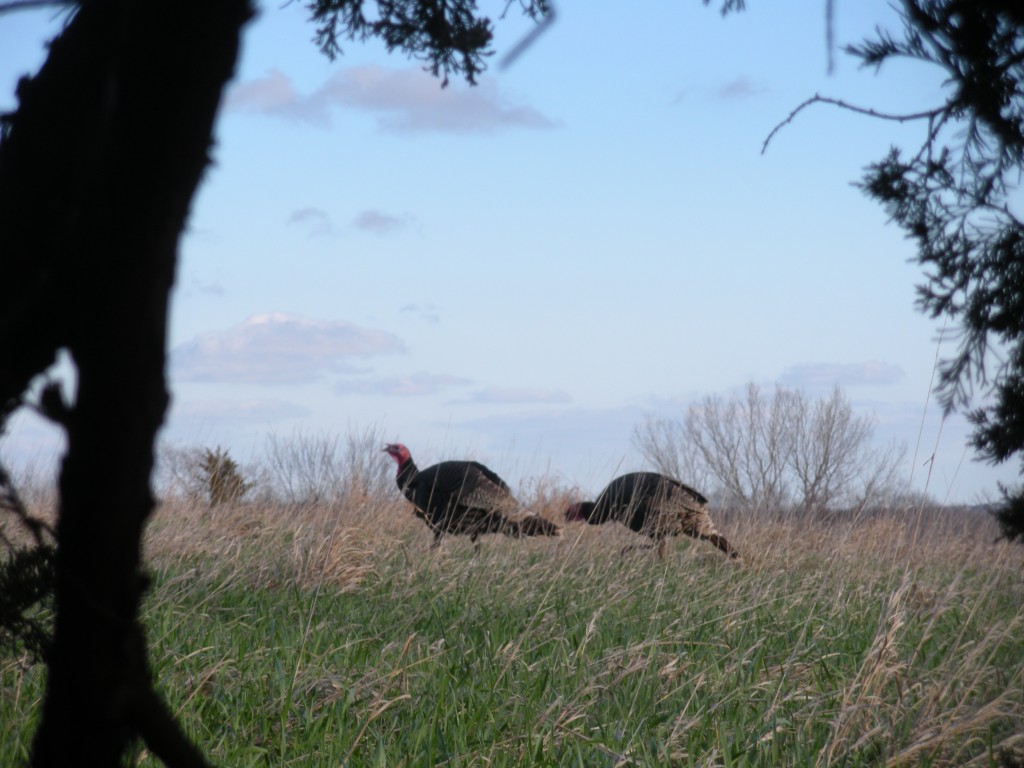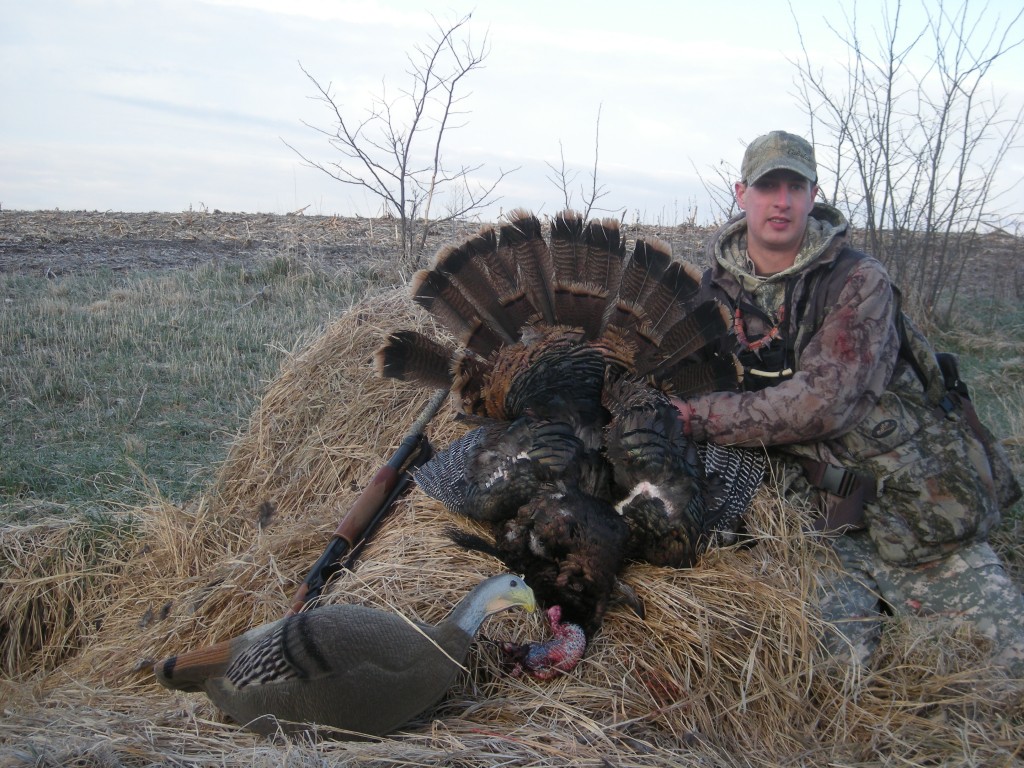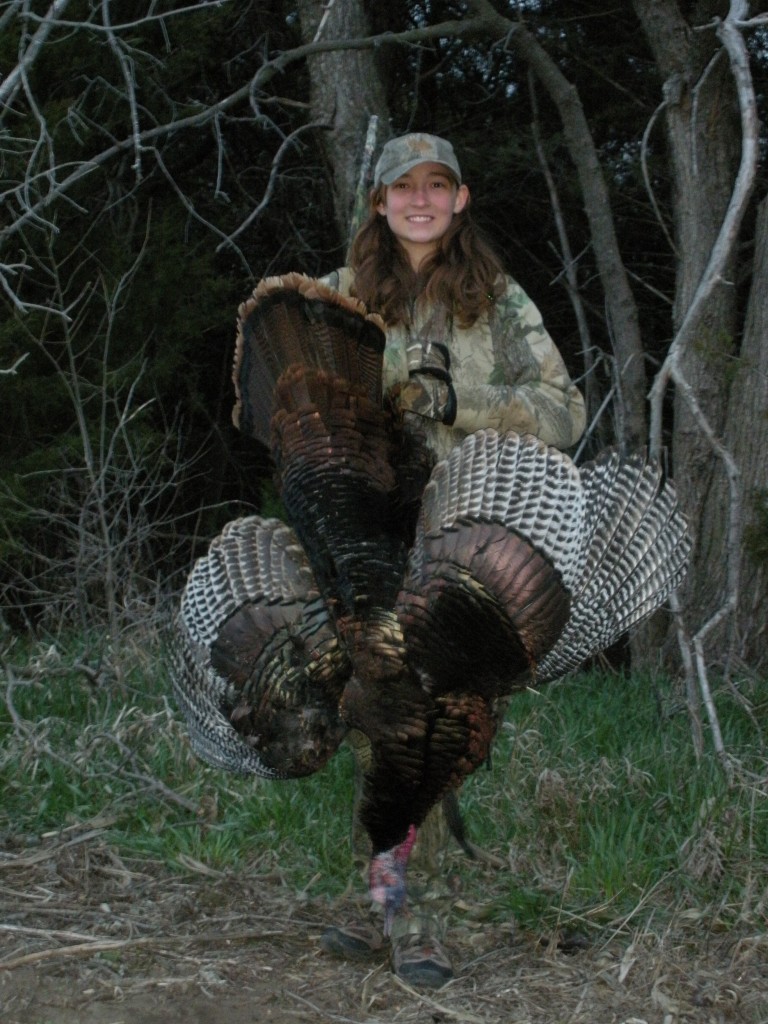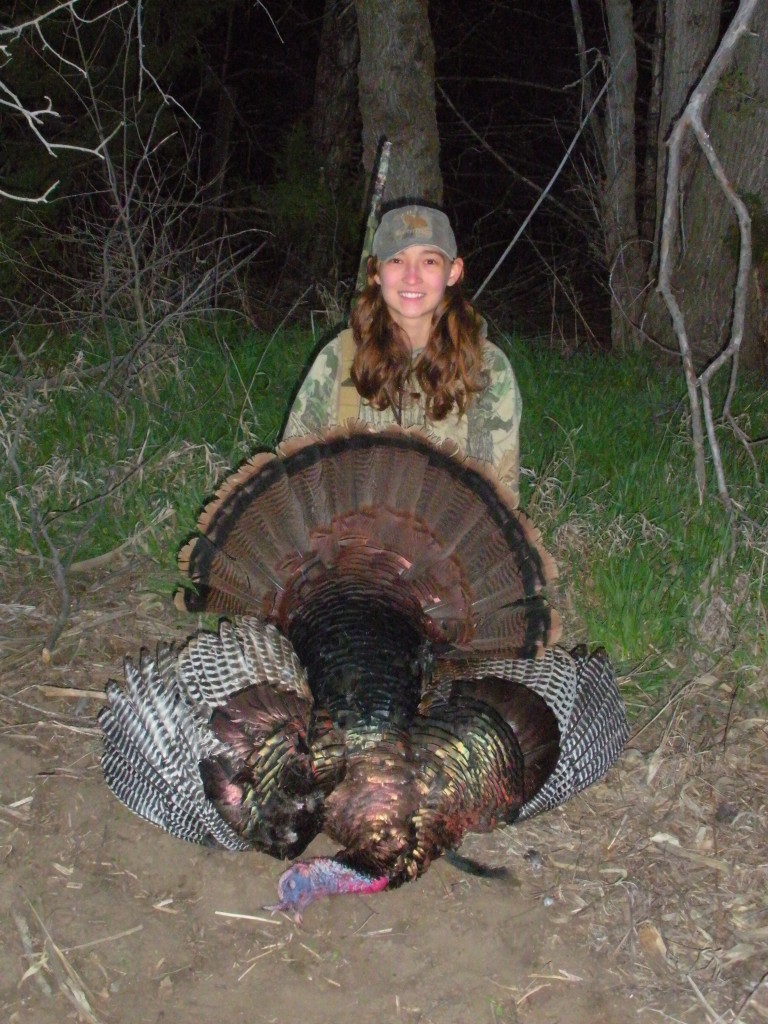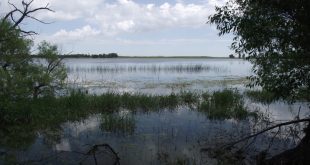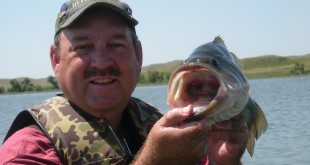Nebraska’s spring turkey season has been in full swing for awhile now, time to give you my first report!
My kids and I started doing some scouting a couple, three weeks ago. I will always tell you that in my opinion the key to being successful taking spring gobblers is not expertise on the calls, fancy decoys, or the ability to reach out and stick ’em with an arrow or hit ’em with a load of shot at ranges longer than you should be shooting. No, the key is good ole fashioned hunting skill that starts with scouting your quarry, scouting as often and as much as possible. Having said that, I do not start scouting weeks before spring turkey season opens because the habits of the birds change dramatically from week to week during the spring. Coming out of the winter the turkeys are grouped in large bunches and then as spring progresses the flocks begin to break up and the birds spread out. Some of our favorite spring, hunting spots may not have a bird within a couple of miles during the winter, but come a week or two before season opens, the turkeys will start scattering and inhabiting our hunting grounds.
We enjoy the time spent in the field scouting as much as we do the actual hunt. In fact I have made this point before, that is actually a huge part of the hunt, the biggest and I would say most important part of the hunt. When it comes time to actually harvest a big ole Tom, well, that is just the cherry on top! We savor every minute we get to spend listening to the Toms gobble and watching the interactions and antics of the turkeys whether we have an unfilled tag in our pockets or not. We see a lot of other neat things out in the field, in the “woods”, while we are at it, and get to spend a lot of time together!
I mentioned in a previous blog post that this would be the last year my daughter would qualify for a youth permit. We started her season a little over a week ago with the opening of our youth, spring shotgun turkey season. Now, my daughter is a very casual turkey hunter. That drives her old man and especially her big brother a little bit crazy sometimes, because she is not real excited about rolling out of bed way before dawn for several mornings in a row, or hunting in the cold, and she has other activities she wants to do too. So, for Emily we try to keep it casual, hunt when she has time and when she wants. The most important thing is that she is enjoying it. It is supposed to be fun!
The past two spring seasons Emily’s casual approach has worked very well. She killed her first Tom on an evening hunt, only the third, short evening hunt we had put in that year. Then last year we slept in on the youth shotgun opener (there was some rain in the area that morning), and then hunted for only about an hour late in morning before Emily jelly-headed a jake. This year we worked a little harder; however, much of that was due to Emily’s choosing because she was not going to settle for any ole jake this year, only a big Tom like her brother and dad.
The weather during the week when only the youths could hunt with a shotgun was not the best this year either. We put in four evening hunts when we could, and froze on a couple of those. Emily could have punched a tag on one of those evenings as we called a couple of jakes in, but she held firm and we let ’em walk.
As the first week of the youth shotgun season drew to a close, Emily had not killed a bird. With the spring shotgun season opening for everyone else, her brother, Daniel, and old man were in the game too. We really like to get Emily a bird during that first week of youth shotgun season, but it did not work out this year.
I had a work obligation on the morning of the regular spring shotgun opener, so Daniel slipped out early on his own.
He was back in town with a big Tom before I left the house!
Often a person has to be flexible and creative when hunting spring gobblers. Folks think of turkeys as birds of the woods, but they love to spend time feeding in fields. In addition the Toms love the visibility of fields to strut, gobble and attract hens. The frustration of hunting spring gobblers in fields is there usually is NOT a place to hide! You can try to pick likely spots along the edges where birds may enter or exit the field or come strolling by, but often is the time I wish there was someway I could be right in the middle of the field–“If only there were one big cedar tree out there in the middle.” I have even thought about buying a layout blind like goose hunters use in fields.
While scouting this preseason, we knew turkeys were using a corn field just like they have in previous years. But, with some haying that was done last year there was a small, partial bale of hay left in a waterway in the middle of that field. I got a big grin on my face when I found it, and conveyed that “intelligence information” on to my son. Now we had a “blind”, a hay bale, in the middle of the field to use as a hiding place!
Daniel sat his butt up against that hay bale in the darkness before sunrise on opening day. As the hens woke up in the nearby trees they pitched down into the field, all around my son. If you have never had turkeys fly down around you like that, it is a huge thrill. Soon enough a big strutting Tom showed up too, and he rolled him over at about 10 yards! I knew that hay bale would work for us!
The evening of the regular shotgun opener I slipped out with the kids for an evening hunt. We split up and Daniel took Emily to try to get her bird while I went the other direction. They ended up having a boring evening not seeing or hearing much. I was on turkeys the whole time and eventually, due to time put in scouting, knew where they were going to go and got ahead of a flock of 3 hens, a couple of jakes and one big Tom. The jakes were doing all the strutting and had put the big Tom in his place on the periphery of the flock. Usually the younger jakes occupy the lower places in the pecking order, but occasionally I have seen jakes gang up on older and larger Toms and make them the sub-dominant male birds in that flock. This big Tom stayed on the margins of the flock and came feeding right along the field edge to me, but I just could not get on him and get a shot I felt comfortable with. He was either trotting or a little farther away than I like, so I passed. I did not want to hurry a shot, take a bad shot, and end up missing, or worse yet, crippling a bird.
Finally, earlier this week, Emily and I slipped out for another evening hunt, after work for me and after school for her. We did not have long to hunt, only a couple of hours, but again we found turkeys right away. We spotted a couple of big Toms chasing each other in a field not far from where Daniel killed his bird. We waited until they got out of sight and then slipped in, found a place to sit and threw out my three hen decoys. I told Emily that after that one Tom got done chasing the other, there was a good chance he would come back our way. Sure enough, after sharing a conversation with some hens behind us, Emily spots a bird coming around a hillside a couple, three hundred yards south of us. I put the binoculars on him, saw that it was a big Tom, one with a nice beard swinging from his chest (we call ’em “swingers”), sent a few notes from my mouth call his way and then watched as he started a slow, but steady march toward us. I am sure he heard me and probably saw the decoys as soon as he came around that hill.
It took some time, he never did hurry; did not gobble and only fanned out a little bit one time, but we watched him march all the way to us.
At 25 yards I told Emily to slip off the safety. She did and then says to me “Now what do I do?”
“Kill him”, I whispered back.
She raised the old Browning, I “putted” on the call to get him to stop and raise his head in the air, and “BOOM”. Emily put him down!
Nice job girl!

Both Toms the kids killed were 2-year olds, and did not have huge spurs. Emily’s bird had shorter spurs than Daniel’s and Daniel’s weighed more (24 versus 22 pounds), but Emily’s bird had a beard that was way longer and thicker than her brother’s bird. I may end up shooting a Tom smaller than either of them, but that is OK.
We are not done turkey hunting for the spring; I still have a permit and there will be more time in the field. Those are just some of the experiences we have had. I have not even told you of the shed antlers we have found, the deer we have seen, the skunk digging in a field (Emily thought it was particularly “cute”) or the migration flock of Swainson’s hawks (I am glad I was not a mouse in that field where they were sitting and circling). Those are all little momentoes and memories that will fill out the details of our spring turkey season 2013.
This time of year I just cannot get those big, beautiful, gobbling Toms out of my head. We cannot get enough of them.
I just heard a turkey gobble (at least I did in my head), I gotta go, more to come!
 Nebraskaland Magazine
Nebraskaland Magazine
